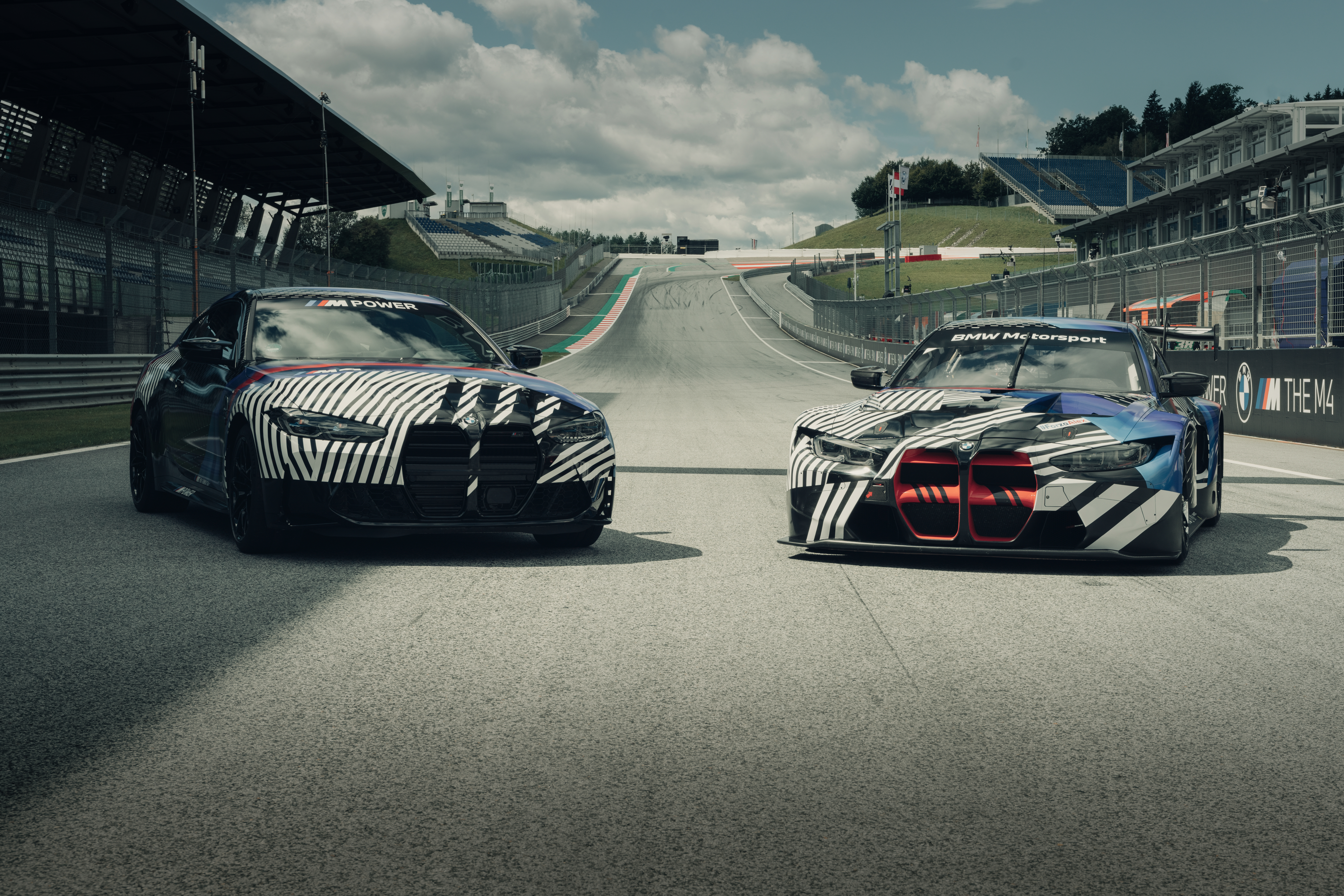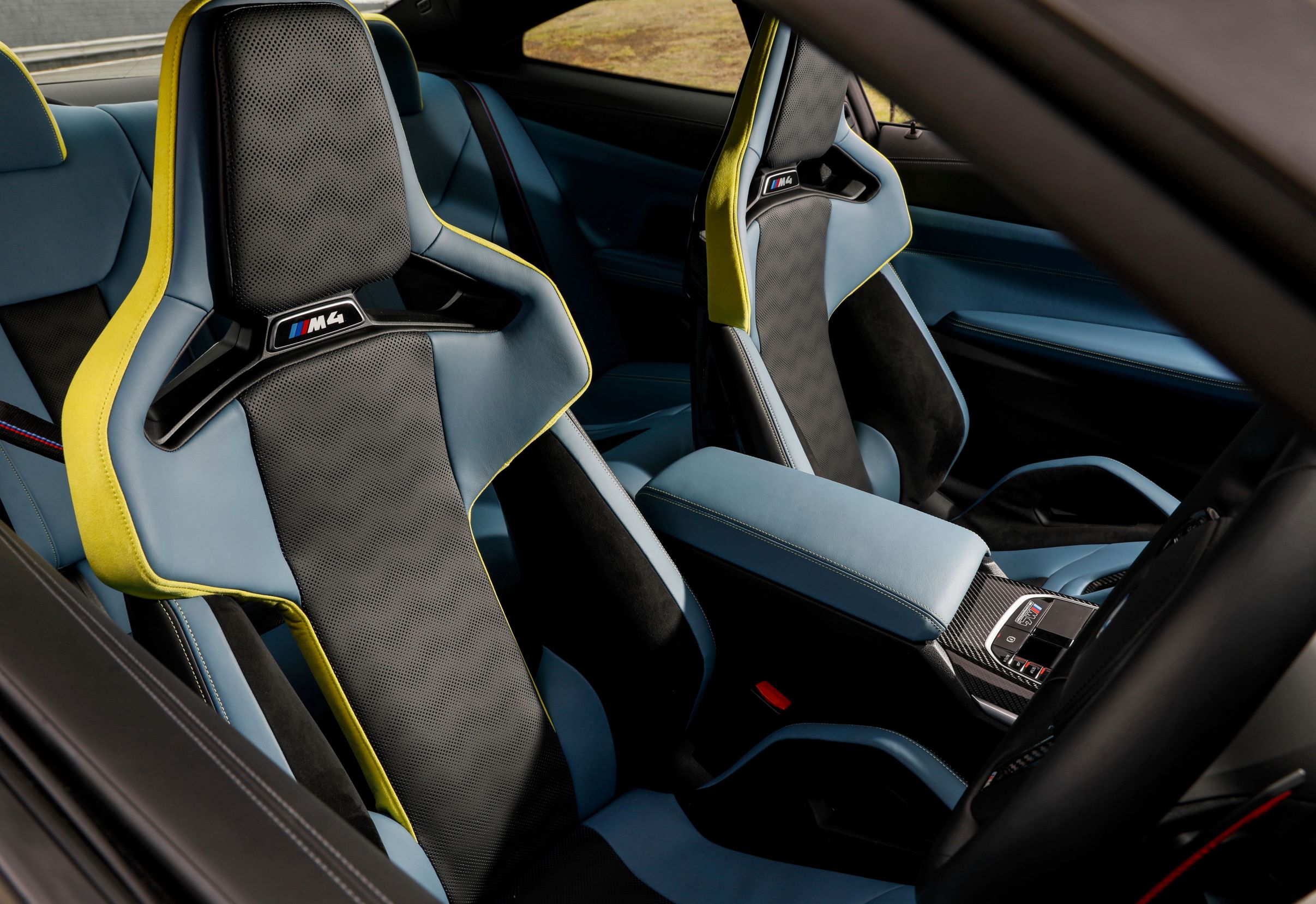
What is it?
A bold new take on an old favourite. There’s no way to escape the all-new M4 Coupe has a very different look, with a polarising new face dominated by a huge new grille.
But nothing I can write will change your mind on this new look, you’ll either love it or hate it; although I will say it does look better in the metal than pictures. What I can do is tell you about how the new M4 performs and handles.
READ MORE: New BMW M3 and M4 revealed
Built on a new platform shared with the latest 3-Series and powered by an upgraded six-cylinder engine the new M4 has suitable performance credentials under the surface. BMW is offering two versions of the M4, the standard model and the more potent M4 Competition; by the end of the year there’ll be a third, an all-wheel drive version of the M4 Competition.
Does it have any racing pedigree?
The M4 and its predecessor the M3 Coupe have a long history of being used on the track. The two-door M3 has been used as the basis for both touring cars and sports cars dating back to the original M3 in the late 1980s.

For this latest iteration BMW has strengthened the connection between the M4 road car and its racing counterpart – the new M4 GT3 – by developing them together. The two were designed and tested simultaneously, and were even revealed alongside each other in their first public appearance. BMW is clearly hoping some of the M4’s on-track success will rub off onto the road car and vice versa.
What’s under the bonnet?
BMW has tried four, six and eight cylinder engines in the M4’s predecessor and while all had appeal in different ways, the Bavarian brand has a particular strength when it comes to straight sixes. Which is why it’s good news the new M4 is powered by the latest version of the brand’s 3.0-litre twin-turbocharged inline six-cylinder engine.

Tuned to make 353kW of power and 550Nm of torque in the standard M4, we’re testing the M4 Competition, which ramps those figures up to 375kW and 650Nm. It’s paired to an eight-speed automatic transmission (the M4 gets a six-speed manual if you still prefer a three-pedal option) and sends all that grunt to the rear wheels.
What does this all mean on the road? It means the M4 Competition is fast. Really, really fast.
BMW claims the M4 Competition accelerates 0-100km/h in just 3.9 seconds, and while we didn’t get a chance to confirm that, based on our experience it doesn’t seem an outrageous claim.
Driving the M4 on the road at half throttle it’s quick, at 75 per cent you’re pushing the limits of what’s sensible on the road and, to be honest, going full-throttle on the road is probably putting you in big trouble with the law.
When the engine comes on boost it has an immense surge that pushes you back in your seat and causes the rear tyres to scramble for grip. So much so that the all-wheel drive version sounds like it will be a worthy addition to the line-up to help better transmit all the power to the road.
Even though it’s a traditional torque converter auto, it doesn’t feel slow or lazy as these types can do when compared to a dual-clutch transmission; which the previous M4 used. This new gearbox shifts smoothie around town but in the dynamic settings it offers crisp, fast shifts that suit the character of the M4 Competition.
How does it handle?
To be blunt, the previous generation M4 was a bit disappointing to drive. It was simply too extreme, largely thanks to suspension that was too firm and an engine that was too peaky which resulted in the old car operating at its best only in a very narrow window. On a nice smooth road (or preferably racetrack) the M4 was great, but on real world roads it was too busy, fussy and lacked feel and precision.

Fortunately for this new model BMW has made some significant changes. For starters, it’s based on new underpinnings which allowed for an overhaul of the chassis and suspension. There’s extra bracing in the front and rear subframes for improved rigidity, but the suspension set-up doesn’t feel as uncompromising as before.
The suspension in question is BMW’s adaptive M system that incorporates electronically-controlled dampers with specific tuning that gives a noticeable difference in ride quality between the ‘Comfort’ drive setting and ‘Sport’.
One strength of the old car that has been retained is the steering, which is again M-specific in its tuning. It provides both precise control but also meaningful feel and feedback for the driver.
Thankfully, given how fast it is, there’s also larger M brakes which get two different settings for a different pedal feel depending on your drive mode.
The net result is a sports coupe that operates in a wider window than its predecessor thanks to a better balance between handling and compliance.
Where would you most like to drive it?
While it’s clearly better on-road, the sheer performance potential of the M4 Competition means the only place to really explore its limits is a racetrack. A fast, flowing circuit like Phillip Island or the Nurburgring Grand Prix circuit would bring the best out of it and allow you to test both the engine and its chassis.

What’s the interior like?
Given how revolutionary the exterior design is it’s surprising how evolutionary the cabin design is, it feels like BMW is playing it safe. The new cabin has a different layout from the old M4 but it’s fundamentally the same elements – sam infotainment screen, same switchgear, same iDrive dial – just shuffled around and rearranged slightly.

It’s obviously a deliberate tactic from BMW, because most of the brand’s cars look the same and have done so for several generations. Clearly they like what they’ve got and are happy to keep tweaking it. But given how radical and bold the exterior is, as well as knowing BMW can design radical and bold interiors like the ones seen in the i3 and i8 models, it feels like the company could have taken more of a risk inside. Having said all that, it’s still a nice place to be and all of the switches and buttons are in familiar places and the overall design looks and feels premium.
The highlights are the seats, at least in our test car, which were the optional M Carbon buckets. These racing-style seats feature integrated headrests and space for multi-point harnesses and feature a carbon fibre structure. They wrap you up tightly and keep you in place even when you really throw the M4 about. The only challenge is getting in and out of them thanks to the high sides, which you really have to push yourself up to get over. There’s also a hard piece of carbon fibre between your legs, which looks good but isn’t particularly comfortable if you move your leg across it.

They also cost an extra $7500, so they may be nice seats but they don’t come cheap.
Is it good value for money?
The standard M4 starts at $149,900 but the M4 Competition is priced from $159,900, with its more powerful engine, auto ‘box and full leather interior.

In terms of its direct rivals it lines up well, with the Audi RS5 Coupe priced from $150,900 and the Mercedes-AMG C63 S starting at $173,500. That positions it nicely between those two in terms of both price and performance.
Would I buy one?
It was a strong ‘no’ with the previous M4, but this new model is a different story. From a performance point-of-view it’s an impressive machine with an excellent engine and a chassis that’s tuned better for everyday use.

Obviously one major deciding factor for many, including myself, will be the looks. Personally, the grille works better in the metal and on the more aggressive M4 than it does on the regular 4-Series range. And the cabin (as that’s where you spend most of your time) is another factor with its conservative design lacking ‘wow factor’ that you get from its rivals.
Ultimately, though, this is a performance car and on that front the M4 Competition has plenty of appeal.
2021 BMW M4 Competition Coupe price and specifications
| Price: | From $159,900 plus on-road costs |
| Engine: | 3.0-litre six-cylinder twin-turbo petrol |
| Power: | 375kW at 6250rpm |
| Torque: | 650Nm at 2750-5500rpm |
| Transmission: | Eight-speed automatic, rear-wheel drive |
| Fuel use: | 10.2L/100km |
| Wheels: | 19-inch alloys (front), 20-inch alloys (rear) |
| Tyres: | 275/35 ZR19 (front), 285/30 ZR20 (rear) |
| Length: | 4794mm |
| Width: | 1887mm |
| Height: | 1393mm |
| Weight: | 1800kg |
| 0-100km/h: | 3.9 seconds |








Leave a Reply
Please login to join discussion!